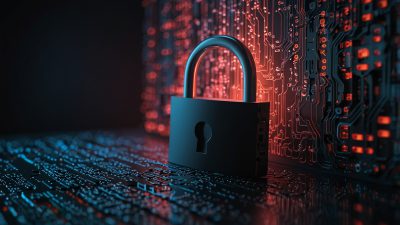In today’s hyper-connected world, digital threats are more pervasive than ever before. With the proliferation of smart devices, social media, and cloud computing, securing personal and business data has become a top priority for individuals and organizations alike. Cybersecurity is no longer a luxury but a necessity. As we continue to integrate technology into our daily lives, understanding how to protect our data has become critical.
The Growing Threat Landscape
The rise of cyber threats can be attributed to the rapid expansion of the internet and the increasing sophistication of cybercriminals. According to a 2023 report by Cybersecurity Ventures, cybercrime is expected to cause $10.5 trillion in damages annually by 2025. This staggering number highlights the urgency of strengthening digital security measures, both on a personal and organizational level.
Common cyber threats include phishing attacks, ransomware, data breaches, and identity theft. These attacks are often executed through methods such as malicious emails, compromised websites, or unsecured networks. With more people working remotely and using public Wi-Fi networks, the vulnerability of personal information has increased. Thus, protecting sensitive data is essential to prevent both financial loss and reputational damage.
Key Strategies for Protecting Your Data
1. Strong Passwords and Authentication
The first line of defense in protecting data is creating strong, unique passwords for each account. The days of simple passwords like “123456” or “password” are long gone. Experts recommend using a combination of upper and lower case letters, numbers, and symbols. A password manager can help you store and manage complex passwords securely, without the risk of forgetting them.
Additionally, implementing two-factor authentication (2FA) adds an extra layer of protection. With 2FA, even if a hacker manages to obtain your password, they will still need an additional code—often sent to your phone or email—to access your account. This drastically reduces the risk of unauthorized access.
2. Regular Software Updates
Another simple yet crucial practice is keeping your devices, operating systems, and applications up to date. Software updates often contain important security patches that protect against known vulnerabilities. Cybercriminals frequently exploit outdated software to gain access to devices, so enabling automatic updates and ensuring all systems are current is a critical measure.
3. Encryption and Secure Communication
Encryption is the process of converting data into a code to prevent unauthorized access. For businesses and individuals dealing with sensitive information, encrypting emails, files, and online communications is essential. Using tools like VPNs (Virtual Private Networks) and secure messaging apps can ensure that data transmitted over the internet remains protected from interception.
In addition, secure websites—indicated by the “HTTPS” protocol—are essential for safe browsing and online shopping. Always check the URL for the “HTTPS” prefix before entering any personal or financial information online.
4. Firewalls and Antivirus Software
Firewalls act as a barrier between your devices and the outside world, blocking harmful traffic and preventing unauthorized access. On top of that, antivirus software helps detect and eliminate malicious programs that can damage or steal your data. It’s vital to have both a firewall and antivirus software enabled on all devices, especially when accessing the internet for browsing, shopping, or socializing.
5. Awareness and Education
Cybersecurity is not just about technology; it’s also about awareness. Many data breaches occur due to human error, such as falling for phishing scams or unknowingly downloading malicious software. Organizations should invest in cybersecurity training for employees to help them recognize threats and respond appropriately. Individuals should also stay informed about the latest scams and learn how to identify suspicious emails, links, or attachments before clicking on them.
6. Backup and Recovery Plans
Even the best security measures cannot guarantee 100% protection from cyberattacks. This is why backing up important data is a fundamental practice. Cloud storage services and external hard drives are ideal solutions for ensuring that critical information is not lost during an attack. In the case of ransomware, where data is often held hostage by criminals, having a backup allows you to restore your files without paying the ransom.
7. Be Wary of IoT Devices
With the rise of the Internet of Things (IoT)—smart appliances, wearables, home security systems, etc.—there are more devices connected to the internet than ever before. While IoT devices offer convenience, they can also present security risks if not properly secured. Always change the default passwords on these devices, use secure Wi-Fi networks, and update their firmware regularly to minimize vulnerabilities.
Conclusion: Stay One Step Ahead
Cybersecurity in the digital age requires vigilance, preparation, and a proactive approach to defending against the myriad threats that emerge daily. By following the above strategies, individuals can protect their personal data and mitigate the risks associated with digital life. For businesses, investing in comprehensive security frameworks, regular employee training, and robust backup systems is critical for safeguarding sensitive information. As technology continues to evolve, so too must our approach to cybersecurity—making sure we stay one step ahead of cybercriminals and keep our data secure in an increasingly connected world.
By staying informed, adopting secure habits, and using the right tools, we can navigate the digital age confidently and safely.





